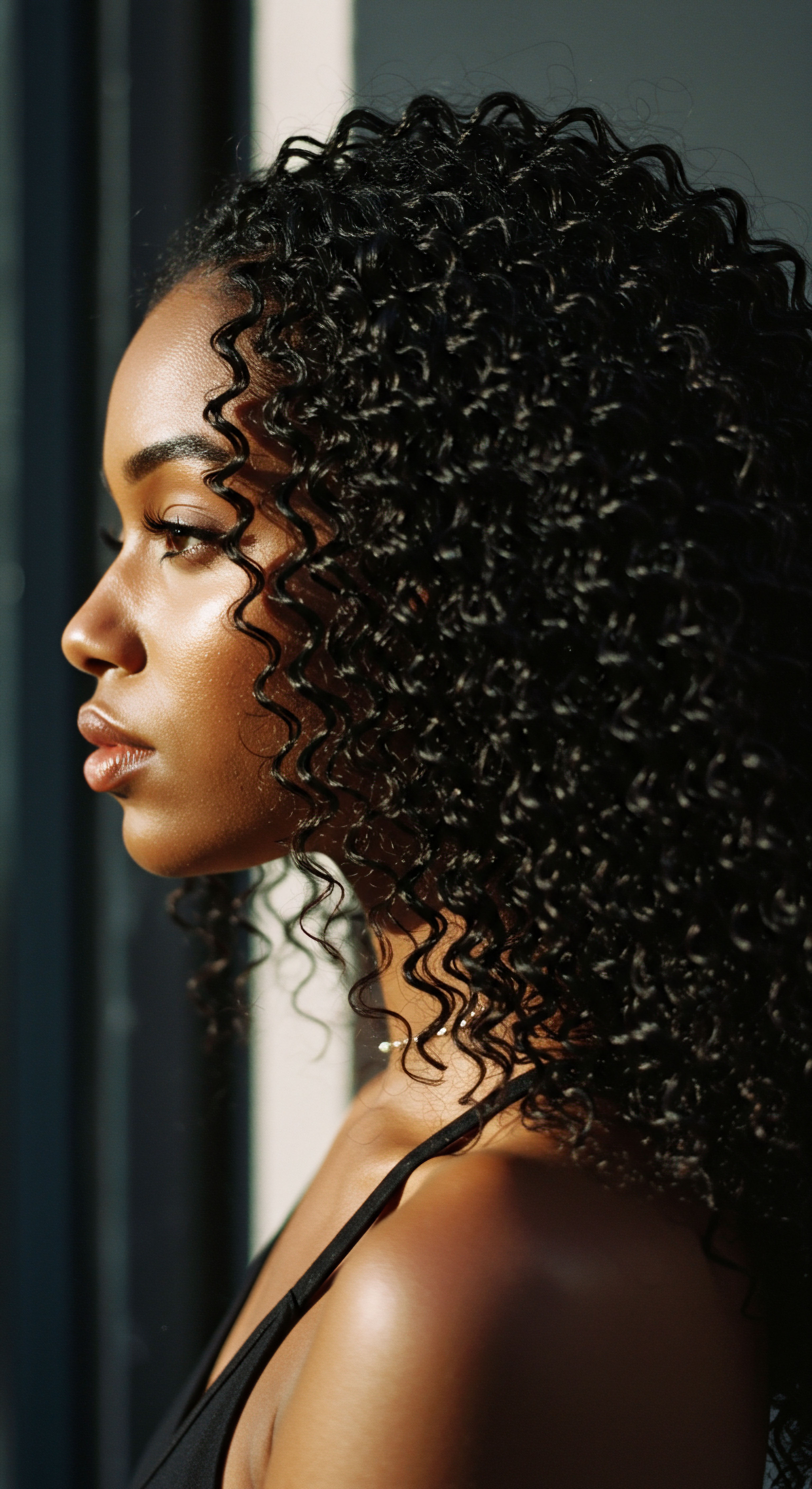
Roots
Have you ever held a single strand of your hair, perhaps after a gentle brush, and observed its particular bend, its distinct spiral, or its gentle undulation? There is a quiet conversation happening there, a dialogue between ancient biological design and the stories it tells on our heads. Understanding what sets one curl pattern apart from another begins not with a chart, but with an intimate acquaintance with the very substance of hair, its microscopic architecture, and the forces that shape its journey from follicle to tip. It is a world of subtle differences, each contributing to the grand, varied expression of textured hair.
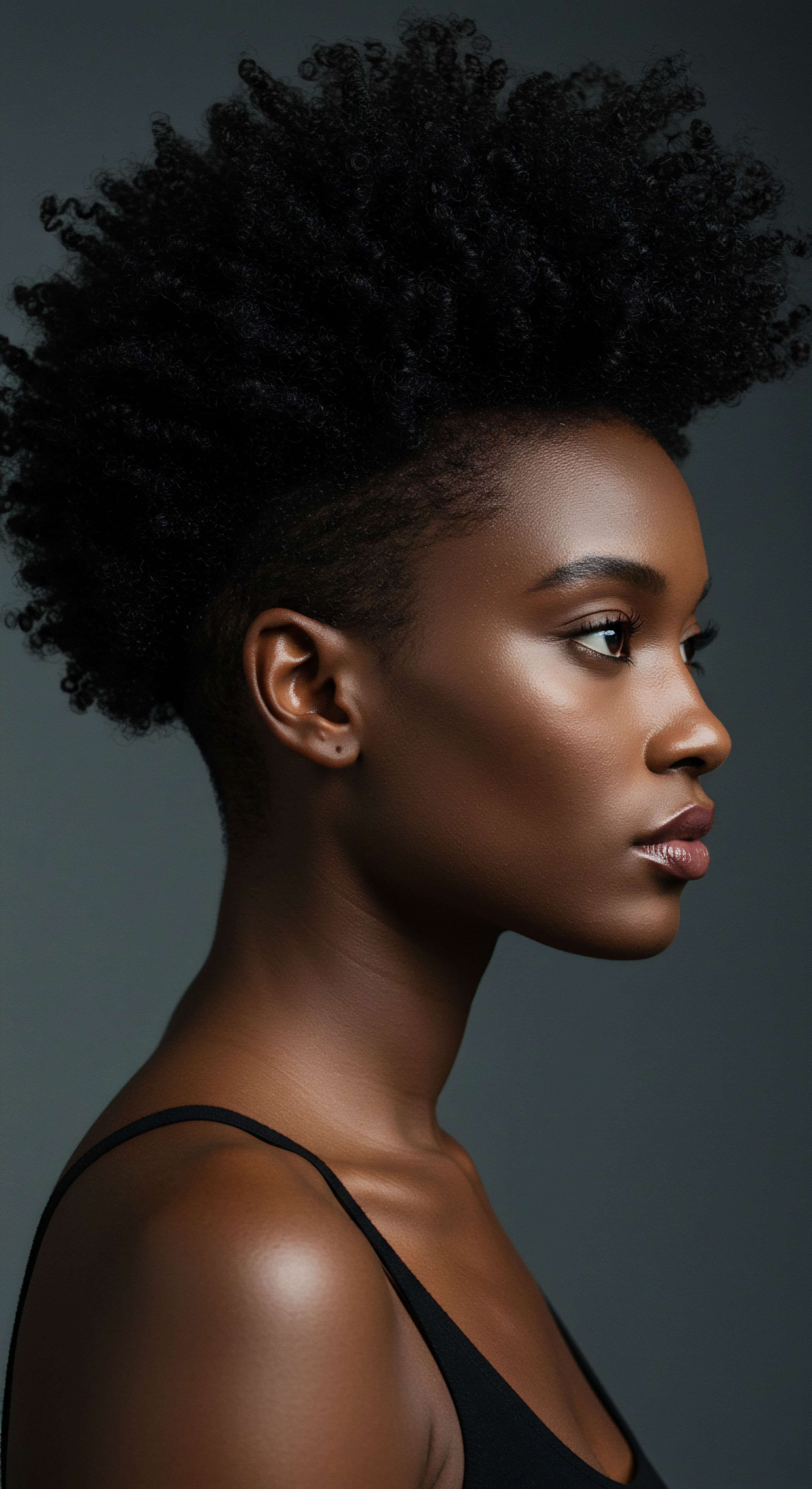
The Follicle’s Whisper
At the heart of every strand’s unique form lies the hair follicle itself, a tiny, dynamic organ nestled within the scalp. The shape of this minuscule dwelling dictates the cross-sectional shape of the hair fiber it produces. A follicle that is perfectly round tends to yield straight hair, while an increasingly elliptical or oval-shaped follicle gives rise to hair with a corresponding elliptical or ribbon-like cross-section.
This flattened shape encourages the hair to coil and bend as it grows, creating waves, curls, and tight coils. The degree of ellipticity directly correlates with the tightness of the curl.
Beyond the simple cross-section, the path the follicle takes as it grows into the dermis also plays a significant role. Straight hair follicles typically descend vertically into the scalp. In contrast, follicles producing wavy, curly, or coily hair often curve or bend beneath the skin’s surface, sometimes even taking on a hook-like or ‘golf club’ shape. This curvature in the follicle’s root influences how the hair shaft exits the scalp and begins its journey, pre-determining its spiral form.
The follicle’s shape and path beneath the skin are the primary architects of a hair strand’s curl pattern.
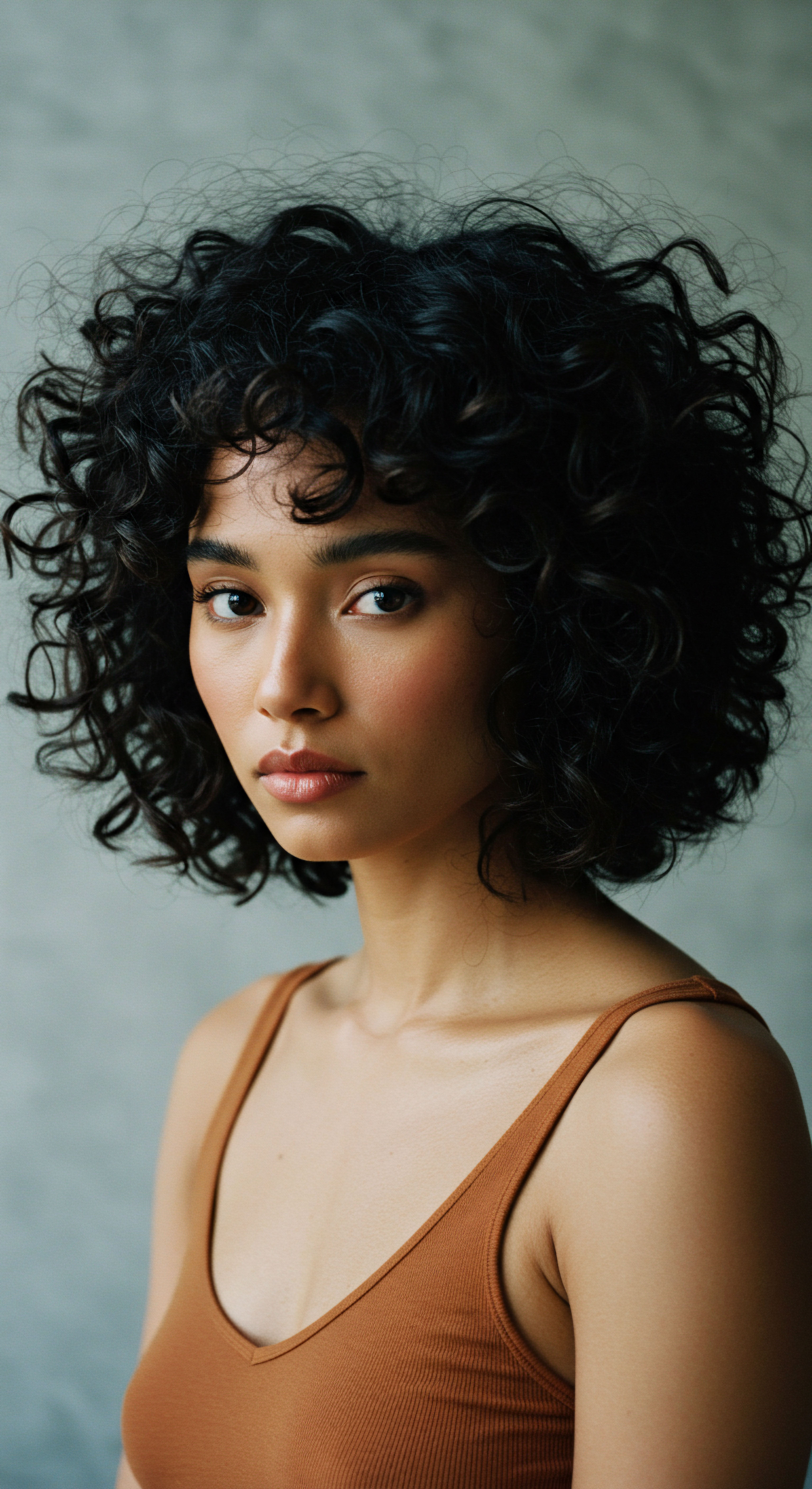
Anatomy and Physiology Specific to Textured Hair
The internal structure of hair, while broadly similar across all types, exhibits particular nuances in textured strands. Each hair strand comprises three main layers ❉ the cuticle, the cortex, and sometimes a medulla.
- Cuticle ❉ The outermost protective layer, composed of overlapping, scale-like cells. In straight hair, these scales lie relatively flat. In highly coiled hair, the cuticle scales may be more lifted or less uniformly aligned, especially at the curves and bends of the strand. This can affect how light reflects off the hair and how well moisture is retained.
- Cortex ❉ The central, thickest layer, providing hair with its strength, elasticity, and natural color. It contains keratin proteins arranged in specific formations. In curly and coily hair, the distribution of these keratin proteins within the cortex can be asymmetrical, with denser packing on the inner side of the curl, further contributing to the hair’s propensity to coil.
- Medulla ❉ The innermost core, often absent in fine hair. Its presence and continuity can vary across hair types and even within a single strand.
A significant aspect of textured hair physiology lies in its mechanical properties. Highly coiled hair, while appearing voluminous, can be more susceptible to breakage at its points of curvature. This is due to the uneven distribution of stress along the helical structure.
For instance, research by Robbins (2012) in Chemical and Physical Behavior of Human Hair discusses how the highly elliptical cross-section and helical structure of coiled hair contribute to its unique mechanical behavior and susceptibility to breakage. The bends in the strand represent points of increased mechanical stress, where the cuticle may be more vulnerable to lifting or damage, potentially exposing the cortex.
| Follicle Shape Round |
| Hair Cross-Section Circular |
| Resulting Hair Type Straight |
| Follicle Shape Slightly Oval |
| Hair Cross-Section Oval |
| Resulting Hair Type Wavy |
| Follicle Shape Elliptical to Kidney-Bean |
| Hair Cross-Section Flat, Ribbon-like |
| Resulting Hair Type Curly to Coily |
| Follicle Shape The shape of the follicle profoundly influences the hair fiber's form and behavior. |

Textured Hair Classification Systems
While the scientific underpinnings of curl patterns are complex, various classification systems have emerged to provide a common language for describing hair textures. The most widely recognized system categorizes hair into types 1 through 4, with further sub-classifications (A, B, C) to denote increasing tightness of curl within each type.
- Type 2 Hair ❉ Characterized by a gentle ‘S’ shape, ranging from loose waves (2A) to more defined waves that hug the head (2B) or exhibit a clear ‘S’ pattern (2C). This hair type often possesses a slight oval cross-section.
- Type 3 Hair ❉ Defined by distinct curls that form spiral or ringlet patterns. These range from loose, bouncy curls (3A) to tighter, more voluminous spirals (3B) and tightly packed corkscrews (3C). The follicles are more elliptical, causing the hair to curve significantly as it grows.
- Type 4 Hair ❉ Recognized by its tightly coiled, often zigzag-shaped curls. This hair type exhibits the tightest curl patterns, appearing as small, densely packed coils. It can range from soft and fine (4A) to coarse and wiry (4C), with 4B showing a distinct ‘Z’ pattern and 4C a very tight, often invisible curl pattern when dry, due to shrinkage. The follicles are highly elliptical, and the hair shaft often exhibits multiple twists along its length.
It is worth noting that a single head of hair can display multiple curl patterns, making a rigid classification sometimes challenging. The beauty of textured hair lies in this very diversity, a testament to its dynamic nature.

The Essential Lexicon of Textured Hair
Beyond numerical classifications, a rich vocabulary helps describe the qualities of textured hair, guiding care and styling choices.
Density refers to the number of individual hair strands on the scalp. High density means many strands, while low density means fewer. This influences how full the hair appears and how products distribute.
Porosity describes the hair’s ability to absorb and hold moisture.
- Low Porosity ❉ Hair with tightly bound cuticle layers, making it difficult for moisture to enter but also difficult for it to escape. Products tend to sit on the surface.
- Normal Porosity ❉ Balanced cuticle layers, allowing for good moisture absorption and retention.
- High Porosity ❉ Hair with raised or damaged cuticle layers, which absorb moisture quickly but also lose it just as fast. This can result from genetic predisposition or damage.
Elasticity measures how well a hair strand stretches and returns to its original length without breaking. Healthy hair possesses good elasticity, a sign of a strong protein structure.
Strand Thickness, or diameter, refers to the individual width of a single hair strand, often categorized as fine, medium, or coarse. This impacts how hair feels and responds to styling.
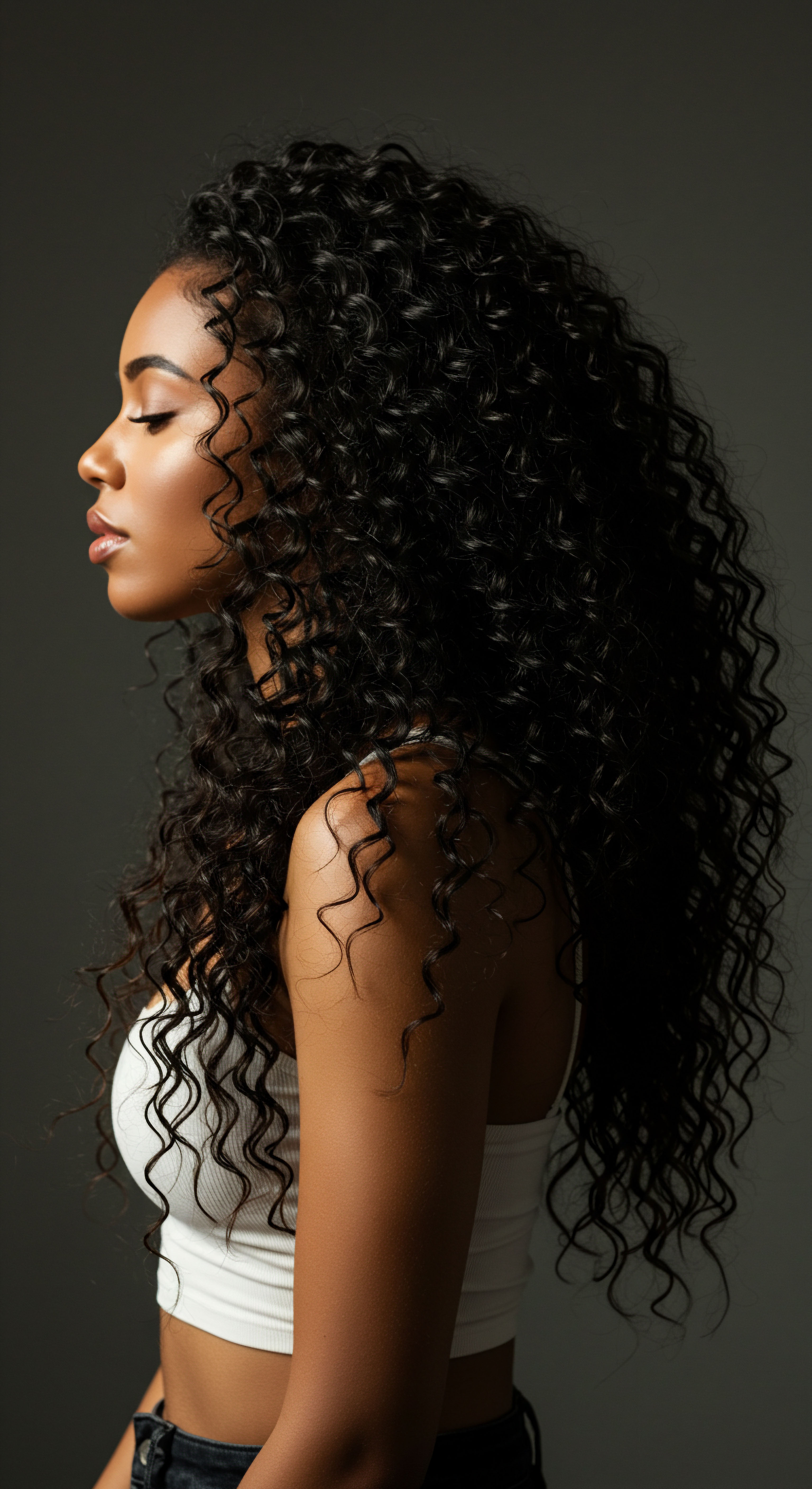
Hair Growth Cycles and Influencing Factors
Hair growth occurs in cycles, and while these cycles are universal, their duration and the specific characteristics of the hair produced can be influenced by genetic and environmental factors, particularly for textured hair. The three main phases are ❉
- Anagen Phase ❉ The active growth phase, where hair cells divide rapidly, forming new hair. This phase can last from two to seven years. The longer the anagen phase, the longer the hair can grow.
- Catagen Phase ❉ A short transitional phase, lasting about two to three weeks, where hair growth stops, and the follicle shrinks.
- Telogen Phase ❉ The resting phase, lasting around two to four months, during which old hair sheds, and new hair begins to grow.
Genetic predispositions play a paramount role in determining curl pattern, density, and growth cycle length. Environmental factors, including climate, diet, and hair care practices, also exert influence. For instance, a diet lacking in essential nutrients can shorten the anagen phase, impacting overall hair length and vitality. Similarly, harsh environmental conditions or aggressive styling can compromise the hair’s structural integrity, regardless of its inherent curl pattern.
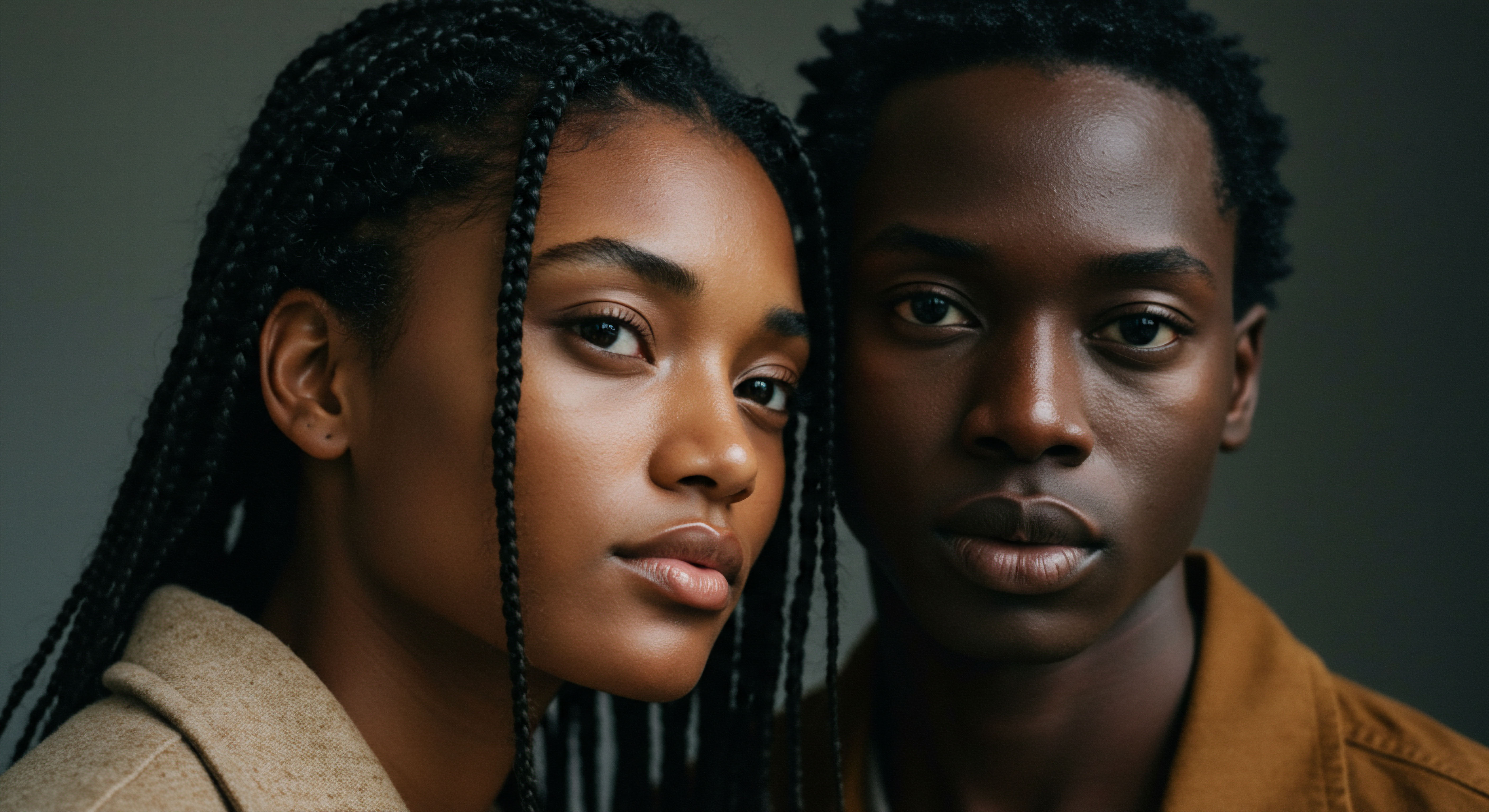
Ritual
To truly understand the distinguishing characteristics of curl patterns, one must move beyond the foundational science and step into the realm of daily practice, the careful dance of hands and tools, the intentional acts that honor and sustain these unique forms. Our hair, particularly textured hair, asks for a considered approach, a series of rituals that respect its inherent qualities and respond to its particular needs. This section seeks to illuminate the applied wisdom that brings out the best in each curl, wave, or coil, acknowledging the subtle shifts in technique and product that make all the difference.

Protective Styling Encyclopedia
Protective styles are not merely aesthetic choices; they serve as a shield for textured hair, minimizing manipulation and exposure to environmental stressors. These styles help retain length and support overall hair health by tucking away the delicate ends. The suitability of a protective style often relates directly to the curl pattern’s inherent characteristics.
For looser curl patterns (Type 2 and some Type 3), styles like gentle braids or loose buns can offer protection without causing excessive tension. The natural ‘S’ shape of wavy hair allows for soft, flowing protective looks that do not pull too tightly on the scalp.
Tighter curl patterns (Type 3C and Type 4) benefit immensely from styles that fully contain the hair, such as cornrows, box braids, or twists. These styles can be crafted with minimal tension to prevent strain on the scalp and hair follicles. The inherent spring of these curl types helps hold these styles securely, providing lasting protection.

The Art of Braids and Twists
Braids and twists are cornerstone protective styles.
- Box Braids ❉ Individual braids, often with added hair, that allow for versatile styling while keeping natural hair tucked away. The size and tension should be appropriate for the hair’s density and strength.
- Cornrows ❉ Braids created close to the scalp, forming geometric patterns. These are excellent for scalp access and uniform tension distribution.
- Two-Strand Twists ❉ Sections of hair divided into two strands and twisted around each other. These are gentler on the hair and can be easily undone for washing or re-styling.
Each of these styles, while universally applied, responds differently to the unique elasticity and coil of various curl patterns. For example, a tightly coiled strand will hold a twist with more inherent grip than a looser curl, often requiring less product for hold.
Protective styles offer a shield for textured hair, reducing manipulation and environmental exposure.
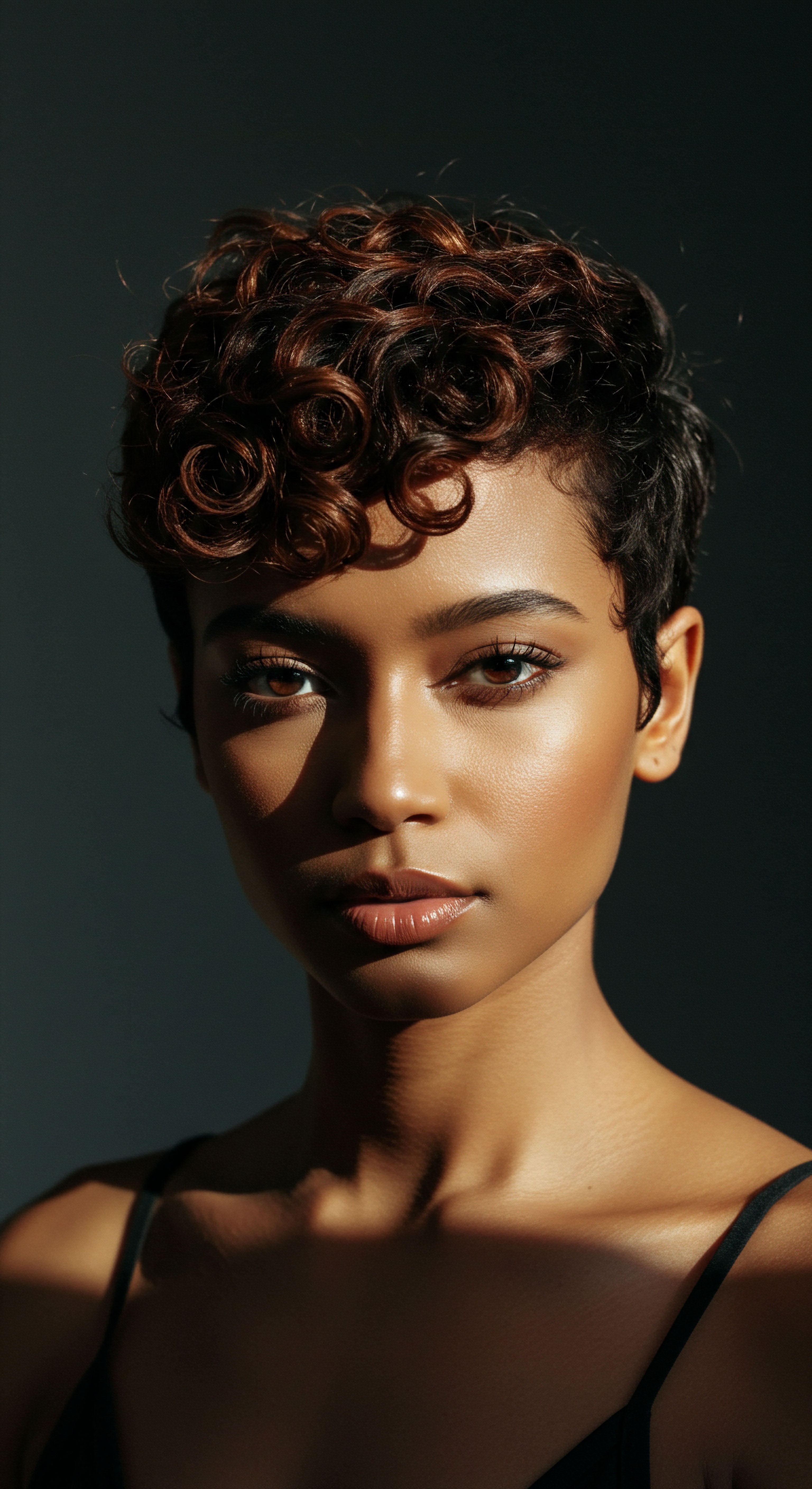
Natural Styling and Definition Techniques
Defining curl patterns without heat or harsh chemicals is a cherished practice within the textured hair community. The techniques employed often vary depending on how much definition the natural curl pattern already possesses.
For wavy hair, techniques like scrunching with a light gel or mousse can enhance the natural ‘S’ shape. The hair’s natural inclination to form waves makes it receptive to minimal manipulation for definition.
Curly hair often benefits from methods that encourage the formation of distinct ringlets. Techniques like finger coiling, where individual clumps of hair are wrapped around a finger to encourage curl formation, or the “shingling” method, which involves applying product to small sections and smoothing them down to define each curl, are highly effective. The natural spring of Type 3 curls responds well to these targeted approaches.
Coily hair, with its tight, often less visible curl pattern when dry, thrives on techniques that stretch and define while maintaining moisture. Wash-and-gos for coily hair often require a generous application of hydrating products to clump the coils and minimize shrinkage. The “L.O.C.” method (Liquid, Oil, Cream) is a popular layering technique that ensures moisture retention for these thirsty coils.
| Curl Pattern Type Type 2 (Wavy) |
| Recommended Techniques Scrunching, braid-outs for soft waves |
| Product Considerations Light mousses, wave sprays, leave-in conditioners |
| Curl Pattern Type Type 3 (Curly) |
| Recommended Techniques Finger coiling, shingling, twist-outs, braid-outs |
| Product Considerations Creams, gels, custards for definition and hold |
| Curl Pattern Type Type 4 (Coily) |
| Recommended Techniques Wash-and-go (with ample hydration), coil-outs, banding, threading |
| Product Considerations Heavy creams, butters, strong-hold gels, oils for sealing |
| Curl Pattern Type Tailoring styling techniques and products to specific curl patterns enhances definition and health. |
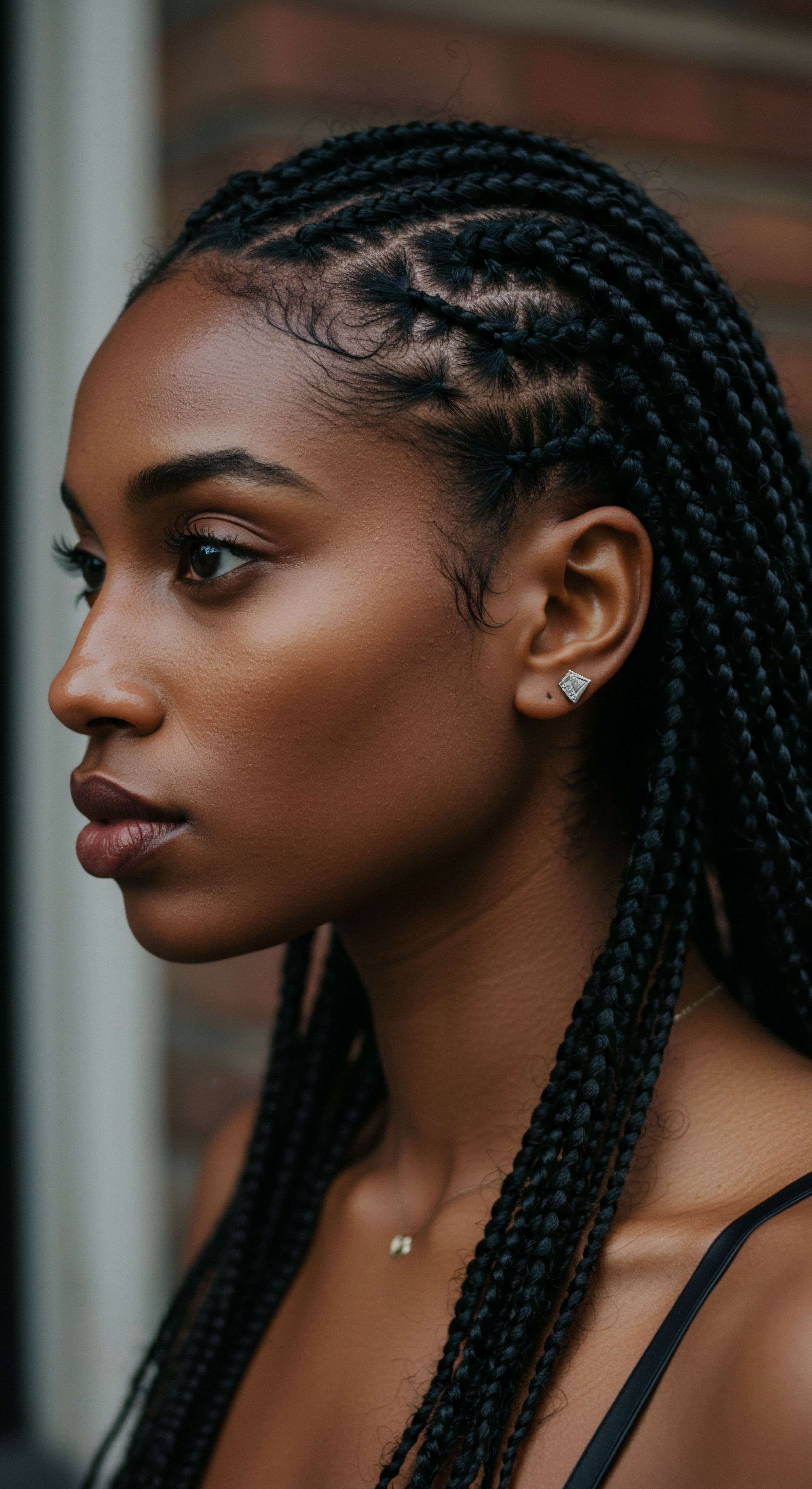
Wigs and Hair Extensions Mastery
Wigs and hair extensions offer incredible versatility and creative expression, alongside providing protective benefits for natural hair. Their selection and application should consider the underlying curl pattern to ensure seamless blending and scalp health.
For those with looser waves or curls, clip-ins or sew-in extensions that match the natural texture can add length or volume with minimal fuss. The goal is often to create a natural-looking blend that complements the existing pattern.
For tighter curls and coils, wigs or extensions that mimic the natural texture (curly, kinky, coily textures) are often preferred for their ability to blend effortlessly with the hair left out. Full wigs or lace fronts can also offer a complete protective barrier, allowing the natural hair underneath to rest and recover.
Proper installation and removal are paramount to avoid tension alopecia or damage to the natural hair. Regular cleansing of the scalp underneath extensions and wigs is also a crucial aspect of this ritual, ensuring that the protective style does not inadvertently lead to neglect.

Heat Styling and Thermal Reconditioning
While natural styling is often celebrated, heat styling remains a choice for many, offering temporary changes in curl pattern. When applied to textured hair, a safety-first approach is not merely a suggestion; it is a fundamental requirement.
The unique structure of textured hair, particularly its tendency for cuticle lifting at bends, makes it more susceptible to heat damage. High heat can cause irreversible alterations to the keratin proteins within the cortex, leading to a permanent loss of curl definition, known as heat damage.
Safety-First Approach ❉
- Lower Temperatures ❉ Always opt for the lowest effective heat setting.
- Heat Protectants ❉ Apply a generous amount of a quality heat protectant that forms a barrier against thermal damage.
- Minimal Passes ❉ Reduce the number of times heat tools pass over each section of hair.
- Deep Conditioning ❉ Prioritize deep conditioning treatments before and after heat styling to replenish moisture and strengthen the hair.
Thermal reconditioning, or chemical straightening, permanently alters the hair’s disulfide bonds, changing its curl pattern. This process is highly impactful and requires professional application and rigorous aftercare to maintain hair integrity. Understanding the original curl pattern’s fragility is critical when considering such treatments, as the chemical alteration can compound existing vulnerabilities.

The Complete Textured Hair Toolkit
The right tools are extensions of our hands, enabling gentle and effective care.
Wide-Tooth Combs ❉ Essential for detangling all curl patterns, especially when wet and saturated with conditioner. The wide spaces between the teeth minimize snagging and breakage.
Denman Brushes or Flexi-Brushes ❉ Excellent for defining curls and distributing product evenly, particularly for Type 3 and Type 4 hair. Their flexible bristles or spaced rows can help clump curls.
Microfiber Towels or Old T-Shirts ❉ Preferable to terry cloth towels for drying, as they absorb excess water without roughing up the cuticle, which can lead to frizz. This is especially important for all textured hair types.
Satin or Silk Scarves/Pillowcases ❉ Reduce friction and moisture loss during sleep, preserving curl definition and preventing tangles. This is a universally beneficial tool for all curl patterns.
Spray Bottles ❉ Indispensable for refreshing curls between wash days, allowing for easy re-wetting and product application without fully saturating the hair.
The choice of tools, much like the styling techniques, should align with the hair’s unique structure and its propensity for tangling or clumping. A softer curl may require less rigorous detangling, while a tighter coil will benefit from more robust, yet still gentle, tools designed to navigate its unique structure.

Relay
Beyond the visual artistry and the practical care, what deeper currents inform the very distinction of curl patterns? How do biological imperatives intertwine with societal narratives, and how does the scientific gaze illuminate the profound cultural meanings held within each coil and wave? This exploration calls us to a space where molecules and cultural memory meet, where the microscopic realities of hair structure echo in the broader human experience. It is here we seek a profound understanding, moving past surface-level observations to the interwoven complexities that shape our perception and interaction with textured hair.
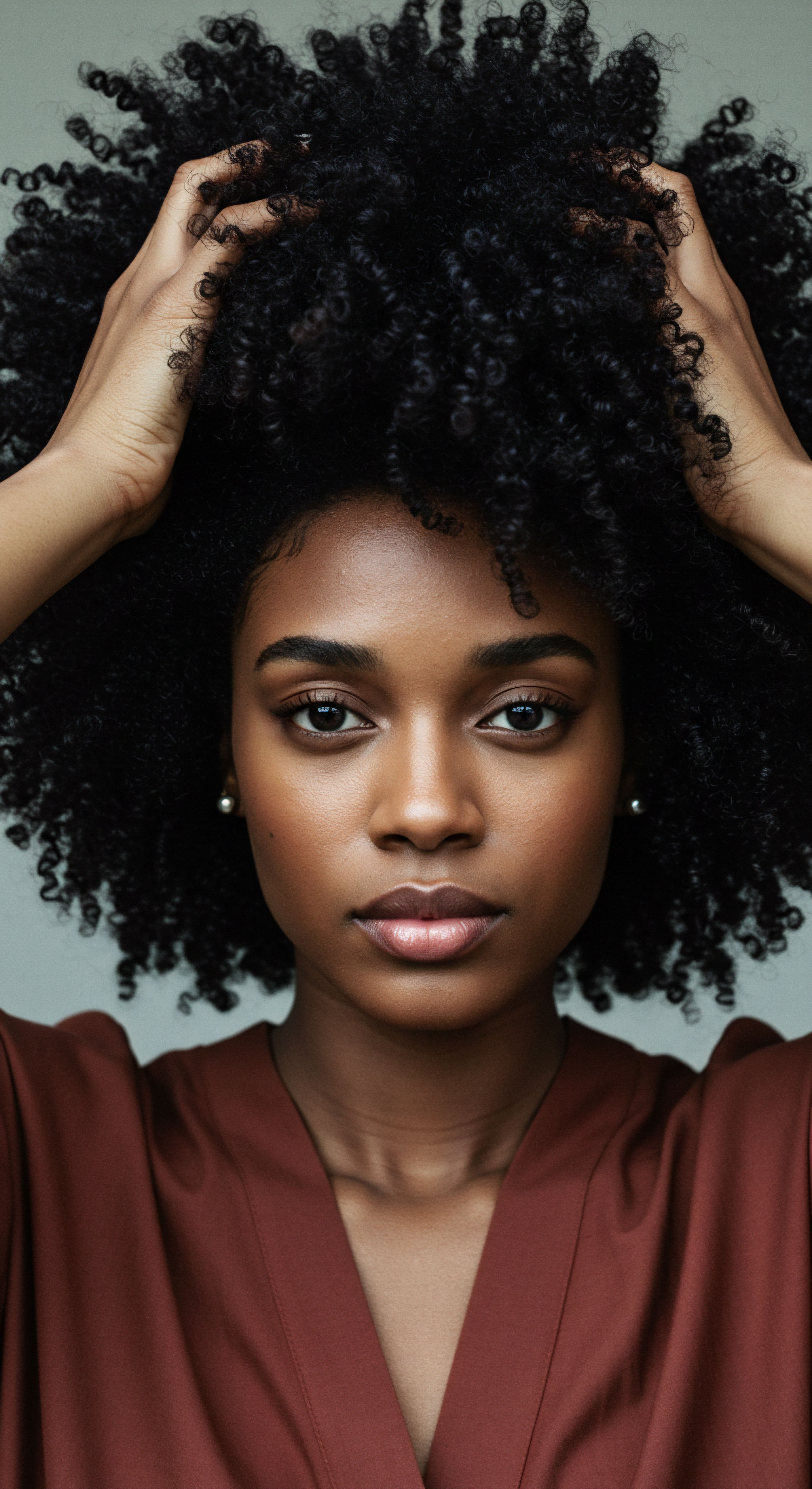
Why Does Hair Form a Curl? The Biological Blueprint
The genesis of a curl lies deep within the scalp, governed by a sophisticated interplay of cellular processes and genetic instructions. The primary determinant, as noted earlier, is the shape of the hair follicle. A highly elliptical follicle produces an elliptical hair shaft, which, as it grows, curls due to the uneven growth rate and cellular differentiation on opposite sides of the follicle. This asymmetry means that cells on one side of the follicle mature and keratinize faster than those on the other, forcing the hair to bend and coil.
Further, the distribution of keratin proteins within the hair shaft itself plays a critical role. The cortex, the main body of the hair fiber, consists of two types of cortical cells ❉ orthocortex and paracortex. In straight hair, these are generally arranged concentrically. In curly hair, however, there is a more bilateral or asymmetrical distribution, with one side of the hair shaft containing a higher proportion of orthocortical cells and the other, paracortical cells.
This uneven internal composition contributes significantly to the hair’s helical growth. This phenomenon is supported by detailed studies on hair fiber morphology and protein distribution.
Hair curl arises from the follicle’s asymmetrical shape and the uneven distribution of keratin proteins within the hair shaft.

The Genetics Behind the Curve
The genetic basis of hair curl is a rich area of scientific inquiry. While specific genes responsible for all variations are still being identified, several genetic markers have been linked to hair shape. For instance, the EDAR gene, known for its role in ectodermal development, has variants associated with hair thickness and straightness in East Asian populations.
For individuals of African descent, research points to the presence of specific genetic loci that predispose to highly coiled hair. These genetic variations influence the development of the hair follicle’s shape and the differential growth of its cells.
A study published in the American Journal of Human Genetics (Adhikari et al. 2013) identified several genetic variants that contribute to hair morphology in diverse populations. One such variant, rs17646946, near the TCHH gene, was strongly associated with hair curliness in Europeans.
More pertinent to the distinction of highly coiled patterns, other research has begun to pinpoint specific genetic regions, such as those near the FGF5 gene, which are more prevalent in populations with very curly or coily hair, influencing follicle shape and the growth angle of the hair. This ongoing research underscores the deep biological roots of curl pattern diversity.

How Does Hair Porosity Affect Curl Definition?
Porosity, the hair’s ability to absorb and retain moisture, is not merely a surface characteristic; it is deeply tied to the cuticle’s architecture and, by extension, the curl pattern. Highly coiled hair, with its inherent bends and twists, often experiences more lifted cuticle layers at these points of curvature. This means that even healthy, unprocessed coiled hair can exhibit higher porosity than straight hair, making it more prone to moisture loss.
When hair is highly porous, water and conditioning agents can enter the hair shaft easily, but they can also escape with equal swiftness. This leads to hair that feels dry quickly after washing, and curls that struggle to maintain their definition as moisture evaporates. In contrast, low porosity hair, with its tightly closed cuticles, repels water initially but, once saturated, retains moisture effectively, leading to well-defined curls that stay hydrated longer.
Understanding a curl pattern’s typical porosity helps in selecting appropriate products and routines. For high porosity, heavier creams and oils are needed to seal the cuticle and prevent moisture escape. For low porosity, lighter, water-based products and the use of steam can help open the cuticle for better absorption.
| Porosity Type Low Porosity |
| Cuticle State Tightly closed |
| Moisture Behavior Resists water, retains moisture once absorbed |
| Care Considerations Light products, steam to open cuticle |
| Porosity Type Normal Porosity |
| Cuticle State Slightly raised |
| Moisture Behavior Balances absorption and retention |
| Care Considerations Versatile, adaptable to various products |
| Porosity Type High Porosity |
| Cuticle State Lifted, damaged |
| Moisture Behavior Absorbs quickly, loses quickly |
| Care Considerations Heavy creams, oils, protein treatments |
| Porosity Type Porosity profoundly influences how each curl pattern responds to moisture and products. |
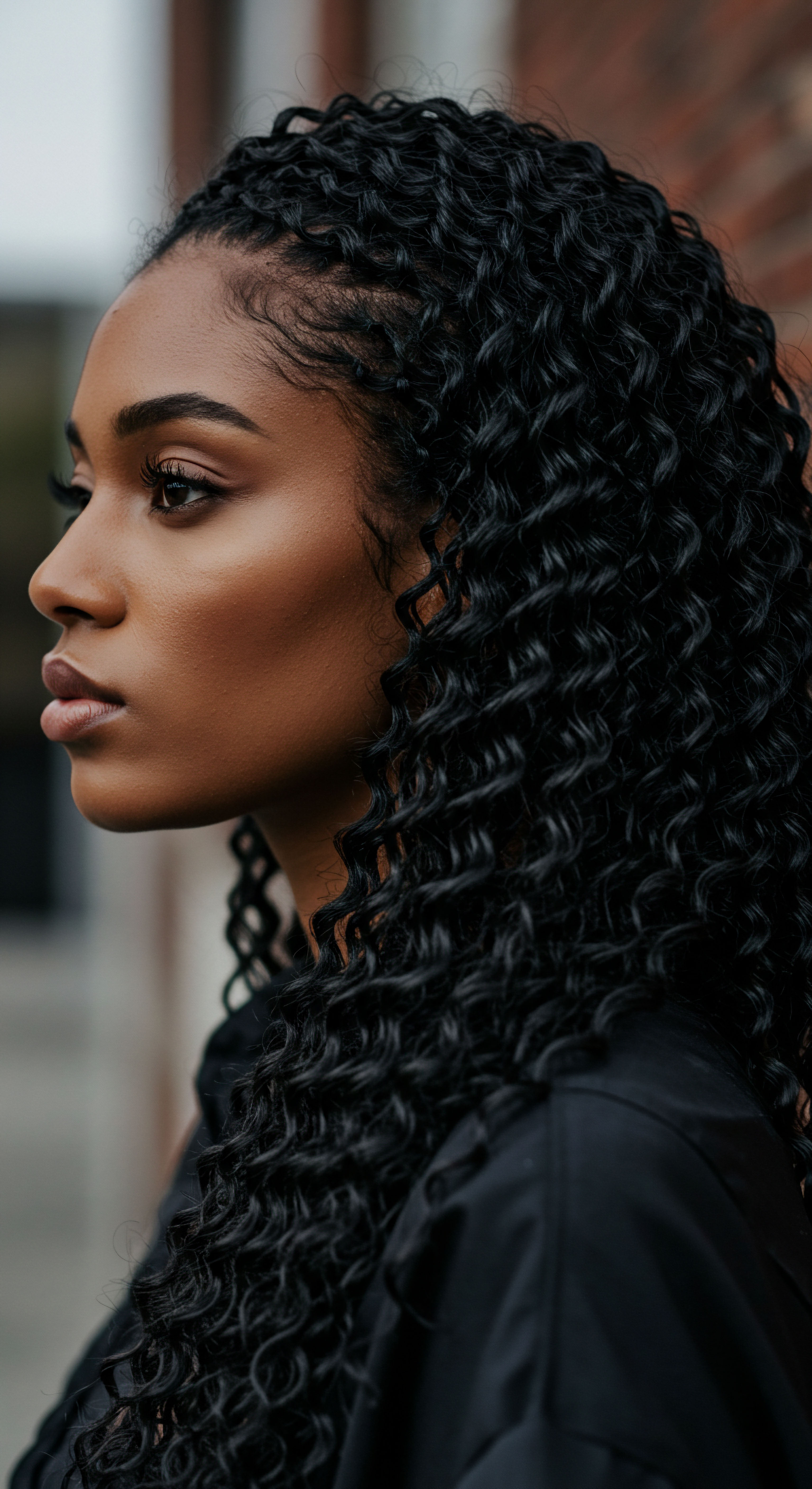
The Cultural and Social Significance of Curl Patterns
Beyond their biological distinctions, curl patterns, particularly those of Black and mixed-race individuals, carry deep cultural and social significance. Hair is rarely just hair; it is a powerful marker of identity, heritage, and social commentary. For centuries, the perception and treatment of textured hair have been intertwined with historical narratives of beauty standards, resistance, and self-acceptance.
In many African cultures, hairstyles historically communicated social status, age, marital status, and even tribal affiliation. The intricate patterns of braids and coils were not only beautiful but also held profound meaning, passed down through generations. This rich legacy underscores the idea that textured hair is a living archive of cultural memory.
The journey to embrace natural curl patterns has also been a powerful act of self-definition and resistance against Eurocentric beauty norms that historically privileged straight hair. The “natural hair movement” represents a reclaiming of identity and a celebration of the diverse beauty of textured hair in all its forms. This movement is not simply about aesthetics; it is about self-love, cultural pride, and challenging restrictive societal expectations.
However, this journey is not without its challenges. Discriminatory practices based on hair texture persist in educational and professional settings, highlighting the ongoing need for awareness and advocacy. The Crown Act in the United States, which prohibits discrimination based on hair texture and protective hairstyles, stands as a testament to the societal implications of curl patterns and the ongoing fight for hair freedom.
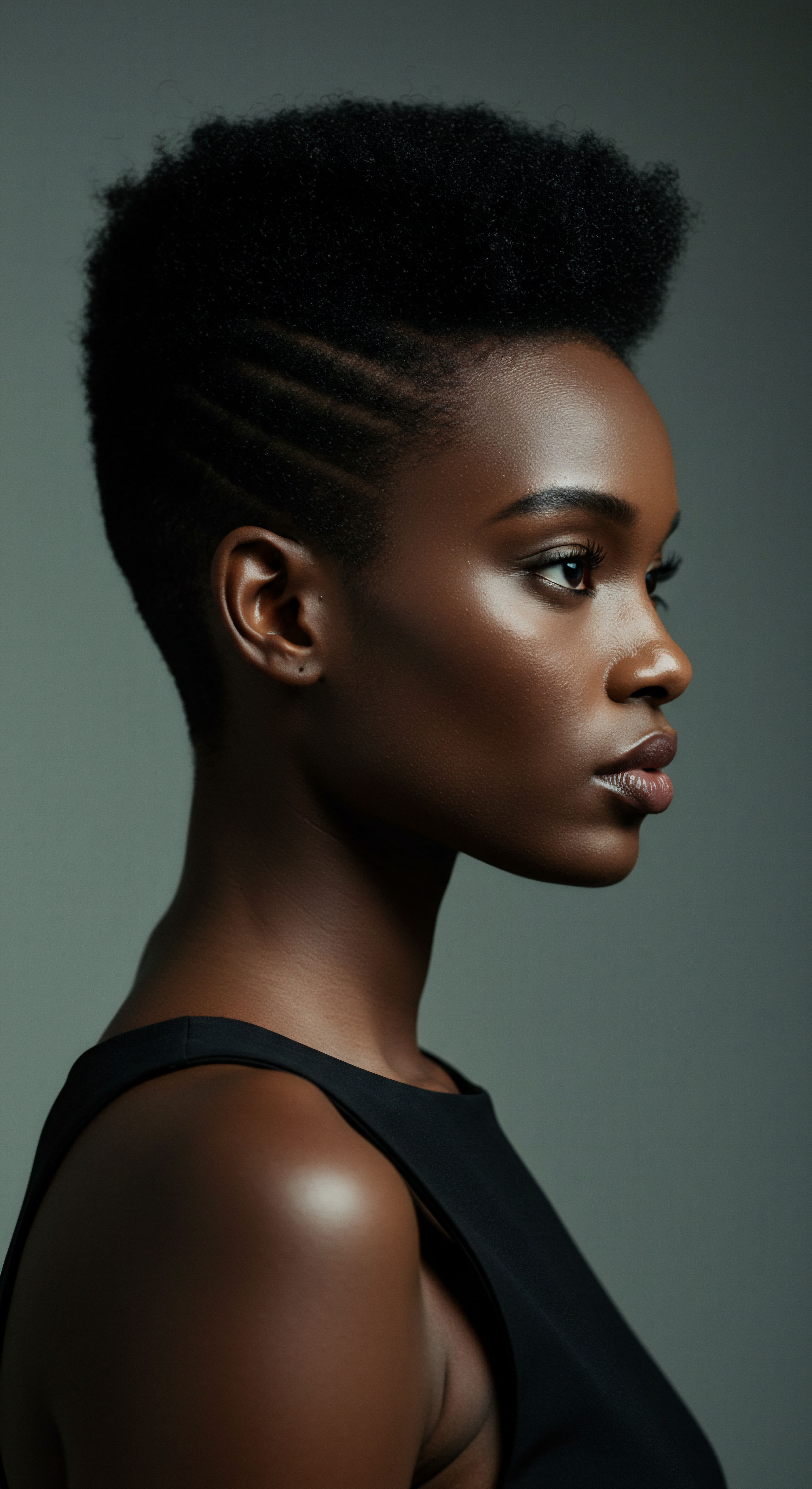
Environmental Factors and Hair Health
While genetics lay the foundation, environmental factors interact with curl patterns, influencing their health and appearance. Humidity, for instance, can cause hair to absorb moisture from the air, leading to swelling and frizz, particularly in highly porous, textured hair. Conversely, dry climates can strip hair of its natural moisture, exacerbating dryness and brittleness, especially for coily types.
Water quality, including the presence of hard minerals or chlorine, can also impact hair health. Hard water deposits can build up on the hair shaft, making it feel rough and diminishing its natural luster, a concern for all hair types but potentially more noticeable on textured strands due to their irregular surface. Regular clarifying treatments and filtered showerheads can help mitigate these effects.
Sun exposure, pollution, and even friction from clothing can also contribute to cuticle damage and moisture loss. Tailoring care routines to account for these environmental stressors is an important aspect of maintaining the vitality of diverse curl patterns.

Reflection
As we consider the many ways one curl pattern stands apart from another, a profound understanding emerges ❉ hair is a dynamic expression, a living testament to biological wonder, cultural heritage, and personal narrative. The subtle twist of a wavy strand, the spirited bounce of a curl, the quiet strength of a coil – each possesses its own distinct voice, its own unique requirements, and its own enduring beauty. To recognize these differences is not to divide, but to appreciate the vast spectrum of human experience embodied in our crowns. This journey into the science and spirit of textured hair invites us to see beyond simple categorization, to listen to what our hair tells us, and to honor its innate wisdom with gentle hands and an open heart.
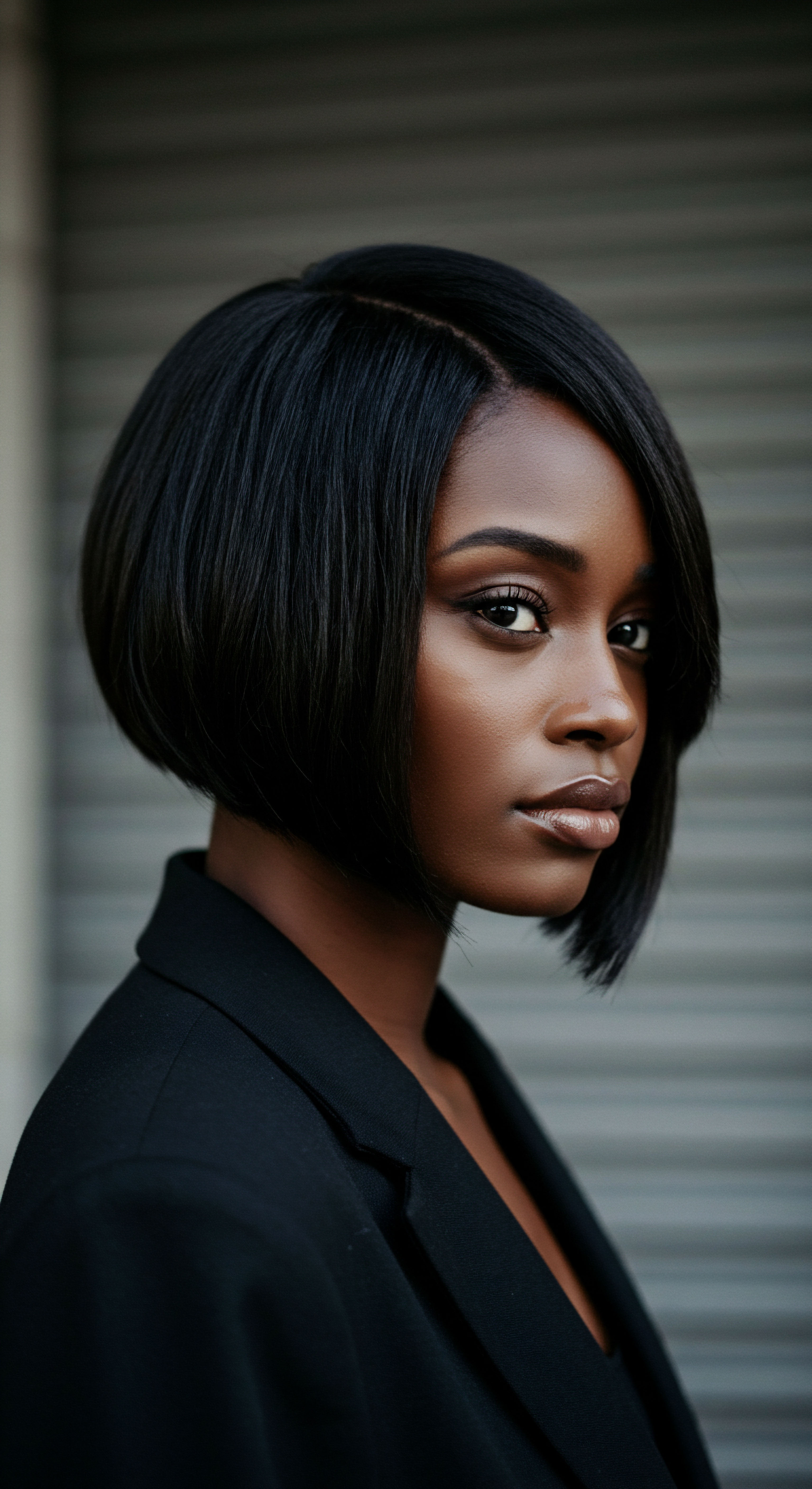
References
- Adhikari, N. et al. (2013). A genome-wide association scan for hair morphology in Europeans. American Journal of Human Genetics, 92(6), 906-918.
- Davis-Sivasothy, Audrey. (2011). The Science of Black Hair ❉ A Comprehensive Guide to Textured Hair Care. Sivasothy Hair LLC.
- Kelly, J. L. & Swift, G. E. (1973). The Mechanical Properties of Hair. Journal of the Society of Cosmetic Chemists, 24, 273-286.
- Robbins, Charles R. (2012). Chemical and Physical Behavior of Human Hair (5th ed.). Springer.
- Khumalo, N. P. Doe, P. T. Dawber, R. P. & Ferguson, D. J. P. (2000). What is normal black African hair? A light and scanning electron-microscopic study. Journal of the American Academy of Dermatology, 43(5), 814-820.
- Bernard, B. A. (2004). Human hair shape is programmed from the bulb. International Journal of Dermatology, 43(Suppl 1), 11-16.
- Tarlo, Emma. (2016). Entanglement ❉ The Secret Lives of Hair. Oneworld Publications.
- Orfanos, Charles E. & Happle, Ralph. (1990). Hair ❉ A Biomedical Review. Springer.
- Drelos, Zoe Diana. (2015). Cosmetic Dermatology ❉ Products and Procedures (3rd ed.). Wiley Blackwell.
- L’Oréal Research. (Various publications on hair morphology and properties, often presented at scientific conferences or published in cosmetic science journals).